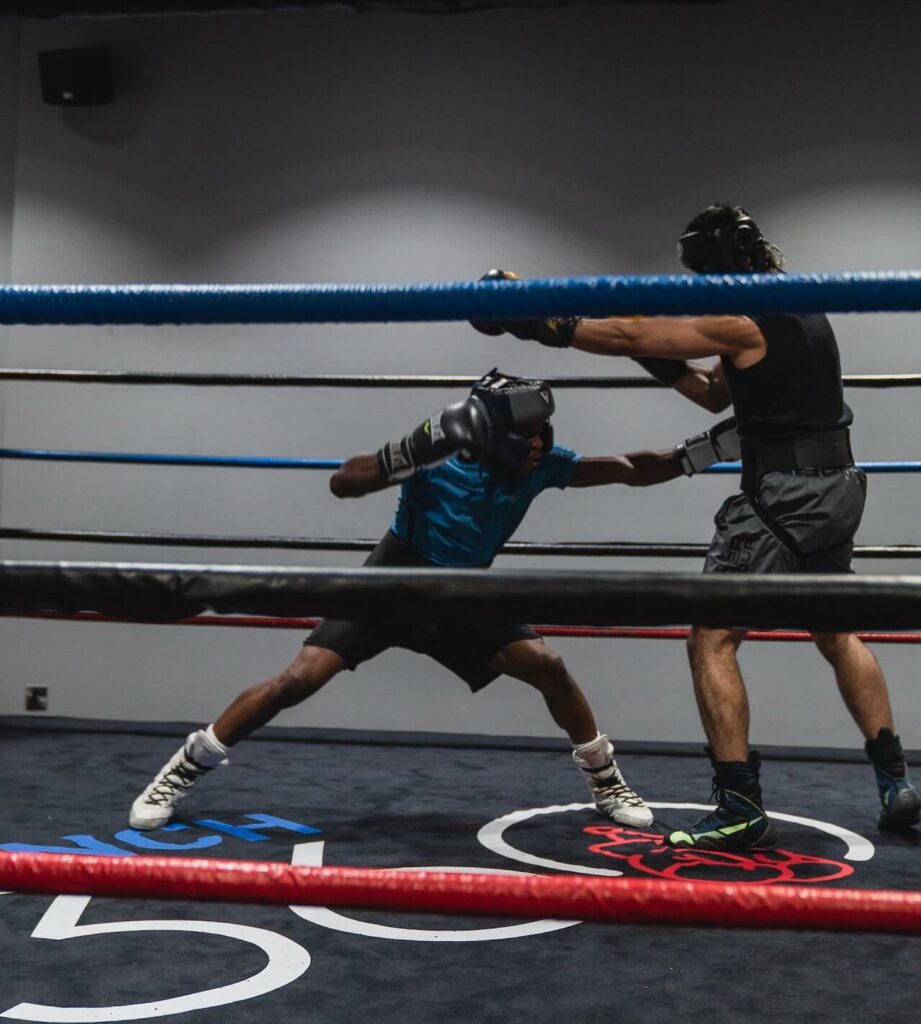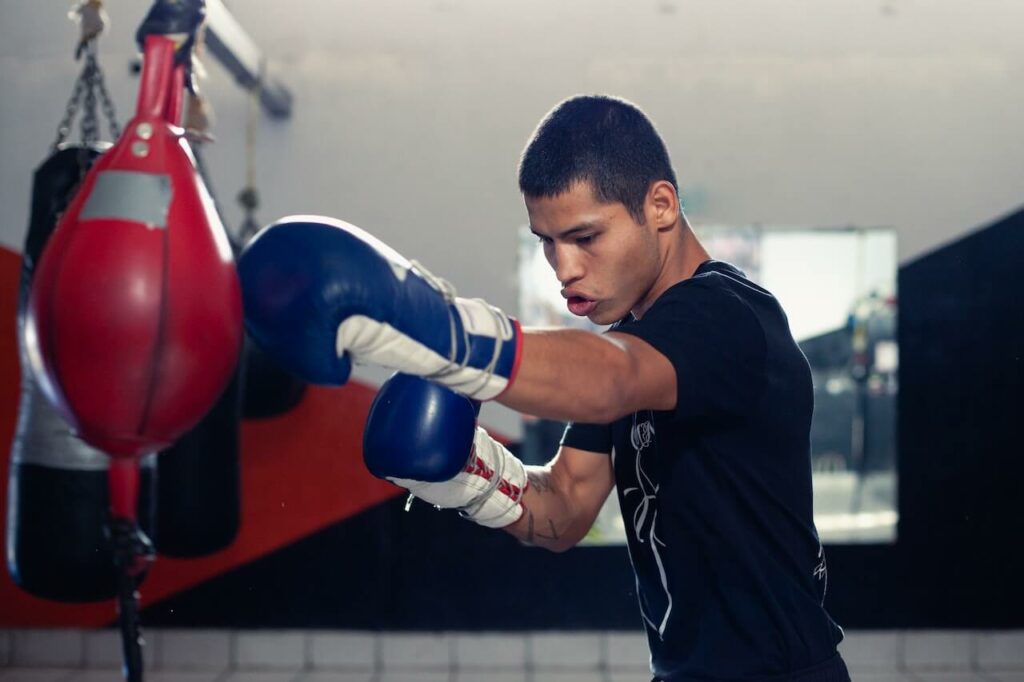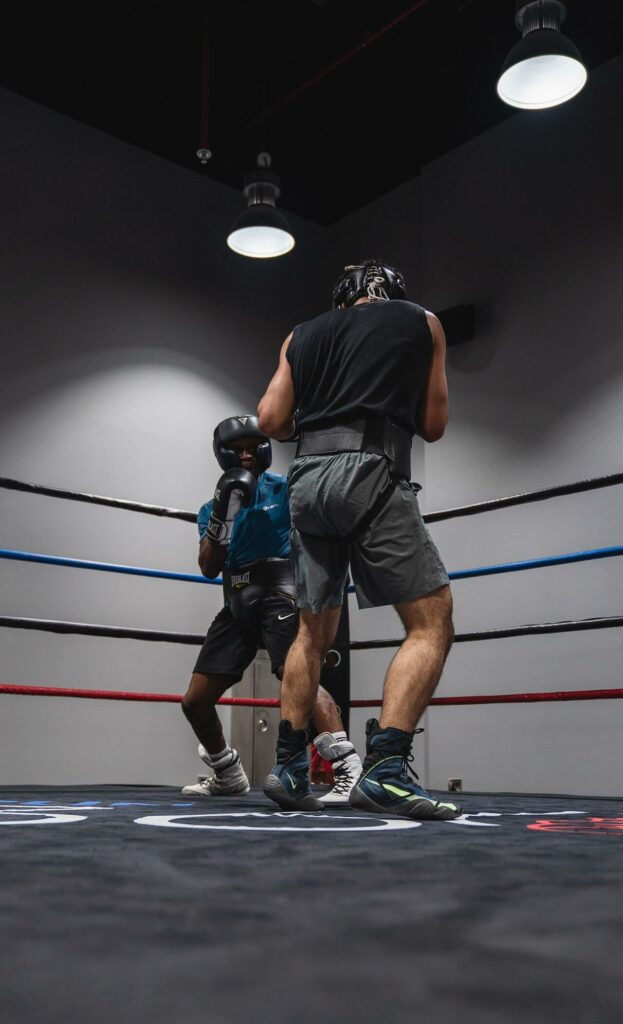intro
When stepping into the ring in boxing, you will meet different opponents with different types of bodies and styles. Each of them must be dealt with differently with a different approach. That’s what differentiates an experienced and mature boxer from an inexperienced boxer.
Here we will discuss tips and strategies on how to approach a taller opponent with a longer reach properly.
Dictating the pace
Being the smaller fighter requires you to work extra and be dominant. The taller fighter can hang around, leaving you in the distance and jabbing you away whenever you try to get closer. That’s a harsh situation to be in. So first thing first, you will have to be the first to initiate contact, making the first move and using angles. In other words, you need to be first.
Be the first to jab, be the first to throw a cross, be the first to make a move, but don’t be predictable. Dictating the pace already puts you in a favorable position. Your opponent will try to stay away from you like you are a hot fireball. This is part of a bigger approach, leading us to the next thing.
Pressuring the opponent
Pressuring the opponent must be done effectively. Especially when dealing with a taller opponent since he already has a favorable advantage on you (putting you in the distance).
Effective pressure would be when you are in range for a punch but decide to deceive and not throw the punch. The opponent will try to take a step back or move sideways, block his sideways with your body and legs (show it by your body language), and slowly lead him to the ropes, making him do what you want him to do.
Taking it into a couple of notes:
- Lead the opponent to the ropes.
- Block the sideways escape routes with your body and body intention.
- Stay at a range where you can throw a punch but hold it to deceive.
- Defense first, dodge incoming punches.
Let him pay for his mistakes
This is one of the most important tips when dealing with a taller opponent. The opponent must pay for the mistakes he makes. It will lead him to think twice when trying to encounter again and may lead him to make even more mistakes.
Exploiting a taller opponent’s mistakes, such as:
Missing a punch – You need to counter-punch him with a power shot and target the body or head as soon as he misses. It will lead him to think twice before he tries again, and it will make a statement in your opponent’s head.
Getting in your range – When the taller opponent is getting in your range, determine it by throwing a jab to check for your reach. If you are within reach, throw a cross or hook, depending on the range. Trying to escape from your pressure – Whenever your opponent tries to run away sideways from your pressure, jab him or even throw a cross.
Using patterns – When understanding that the opponent is repeating patterns in his fighting style, you could exploit it by countering his next moves.

Cutting off the ring properly
The taller opponent will try to put you in the distance. Cutting off the ring effectively will damage his ability to do, and it will let you land your punches and combinations.
To cut off the ring effectively means getting close to the opponent without taking punishment from him (punches). To do so, you need to use your footwork and quickness, bobbing, weaving, and the defensive skills you’ve learned.
You should block incoming punches when trying to get close with your hands, change to a high guard while stepping forward, and don’t forget to adjust if the opponent is targeting the body (If he targets the body, that’s a good indication that he is too close, and you can counter him at that moment exactly).
Focus the body
Body shots are the taller opponent’s worse nightmare. It can change the entire fight and lead to a better overall result. Targeting the body will make the opponent fatigue faster, creating an opening for a punch to the head and inflicting severe damage overall.
How to target the body properly? Use a jab to the body if in medium to long range distance. If in close range, use your hooks and cross to target the body.
Use combinations that combine body-head-body to make your opponent drop his guard. Also, you can adjust the power in each punch to make the opponent carefree about your combinations, for example, a body-head-body, while the first body shot has low power, and the head punch and second body punch should be powerful.


Quickness and footwork
Because a taller opponent will rely on his distance and reach, your ability to use footwork and quickness to get close to the opponent and cut off the ring is crucial. The footwork must be combined with ducking, bobbing, and weaving so you will not get punished while trying to get close to the opponent.
For example, you step forward, and the opponent throws a jab. You lean to dodge the jab and quickly get close using your footwork and then throw a combination of one-two or one-two-three. How to improve your footwork, here are four drills.
Feinting
Feinting will help you not get jabbed or crossed to the head whenever you try to get close to the opponent. Instead, it will make you unpredictable, adding an element of surprise to your next move and confusing the opponent.
For example, you target the body several times with a jab to the body from medium range, but this time your next move will be as you throw a jab to the body, but instead, you switch the target while in the movement to the head, which will result in a clean shot to the head.
Use feints to step forward without the opponent’s notice and make him concentrate on your feints instead of your distance from him. Then, take a step each time you feint, and attack when you are in range for a combination or a punch. To read more about feints.
Summary
Dealing with a taller opponent can be difficult for an inexperienced boxer. Thus it’s important to constantly learn about strategies and listen to your coach about techniques that can be implemented. Remember that boxing is a “thinking man sport” first. You always have to have a plan for dealing with different types of opponents.




